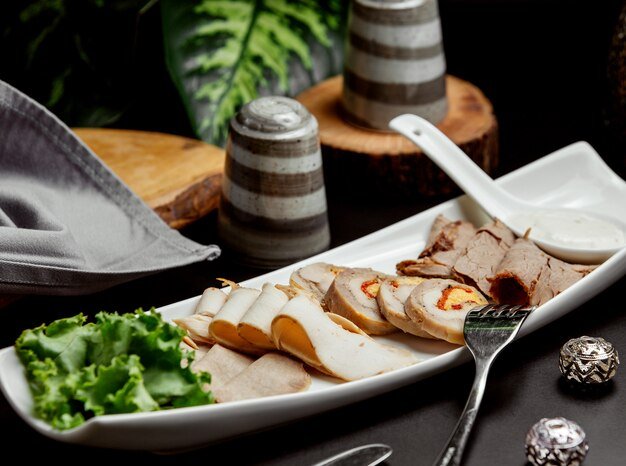If you’ve ever dined in a fancy restaurant, you might have come across a dish called foie gras. But what exactly is foie gras? “People celebrate this delicacy for its rich flavor and smooth texture, but it also sparks plenty of debate. In this blog post, we’ll explore what foiegras is, how producers make it, the controversies surrounding it, and how you can enjoy it responsibly.” Let’s dive in!
What Is Foie Gras?
Foiegras, pronounced “fwah grah,” is a French term that translates to “fat liver.” “It specifically refers to the liver of a duck or goose that farmers have specially fattened.” The process of fattening these birds results in a liver that is creamy and rich in flavor, making it a sought-after ingredient in gourmet cuisine.
The Different Types of Foie Gras
There are two primary types of foie gras:
- Foie Gras Entier: This is a whole liver, typically served as a pâté. Chefs often present it as a luxurious centerpiece on a plate.
- Chefs create foie gras mousse by mixing foiegras with cream or other ingredients to achieve a lighter, spreadable texture.”
How Is Foie Gras Made?
The traditional method of producing foiegras involves a process called gavage, where ducks or geese are fed a high-starch diet through a feeding tube. This process fatten their livers significantly, producing the desired rich flavor and texture.
The Production Process
- Selection of Birds: Farmers usually start with specific breeds, such as the Mulard duck or the Moulard goose.
- Feeding: For about two to three weeks, the birds are fed large amounts of corn and other grains, often through gavage.
- Farmers process the birds and remove the liver once it reaches a certain weight and fat content.”
This method has been practiced for centuries, but it raises ethical concerns about animal welfare.
The Controversies Surrounding Foie Gras
Foiegras is not just a culinary delight; it also comes with its fair share of controversy. Here are some key points to consider:
- Animal Welfare Concerns: The process of gavage is often criticized for being inhumane. Animal rights advocates argue that it causes unnecessary suffering to the birds.
- Bans and Regulations: Some countries and regions, like California and parts of Europe, have banned the production and sale of foiegras due to ethical concerns. However, it remains legal in many other places, including France, where it is a traditional delicacy.
- Sustainability Issues: The production of foiegras can raise questions about sustainability, as it requires significant resources and raises concerns about the treatment of animals.
How to Enjoy Foie Gras Responsibly
If you’re curious about trying foiegras but want to be mindful of the ethical implications, here are some tips for enjoying it responsibly:
- Research Your Source: Look for producers that prioritize ethical farming practices. Some farms use more humane methods of feeding and raising their birds.
- Savor in Moderation: Given its rich flavor, a little goes a long way! Enjoying foiegras as an occasional treat can make the experience more special.
- Pair with the Right Accompaniments: Foiegras pairs well with sweet accompaniments like fig jam or fruit compotes. A glass of sweet wine, like Sauternes, also complements its rich flavor beautifully.
Conclusion
foie gras is what unique and luxurious dish that offers a rich culinary experience. However, it’s essential to be aware of the ethical concerns associated with its production. By choosing responsibly sourced foiegras and enjoying it in moderation, you can appreciate this delicacy while being mindful of the issues it raises.
FAQs
1. Is foie gras considered a delicacy?
Yes, foiegras is often regarded as a delicacy due to its rich flavor and smooth texture. It is commonly found in high-end restaurants.
2. Can I find foie gras in grocery stores?
Yes, many gourmet grocery stores carry foiegras, usually in pâté or mousse form. Be sure to check for ethical sourcing.
3. What does foie gras taste like?
Foiegras has a rich, buttery flavor with a smooth texture. It can taste slightly sweet and is often described as luxurious.
4. Is foie gras safe to eat?
Yes, foiegras is safe to eat as long as it’s sourced from reputable producers and properly prepared. Always check expiration dates and storage instructions.
With this guide, you now have the knowledge to understand what foiegras is and how to approach it thoughtfully. Enjoy your culinary adventures!
visit for more Blogs chiangraitimes

